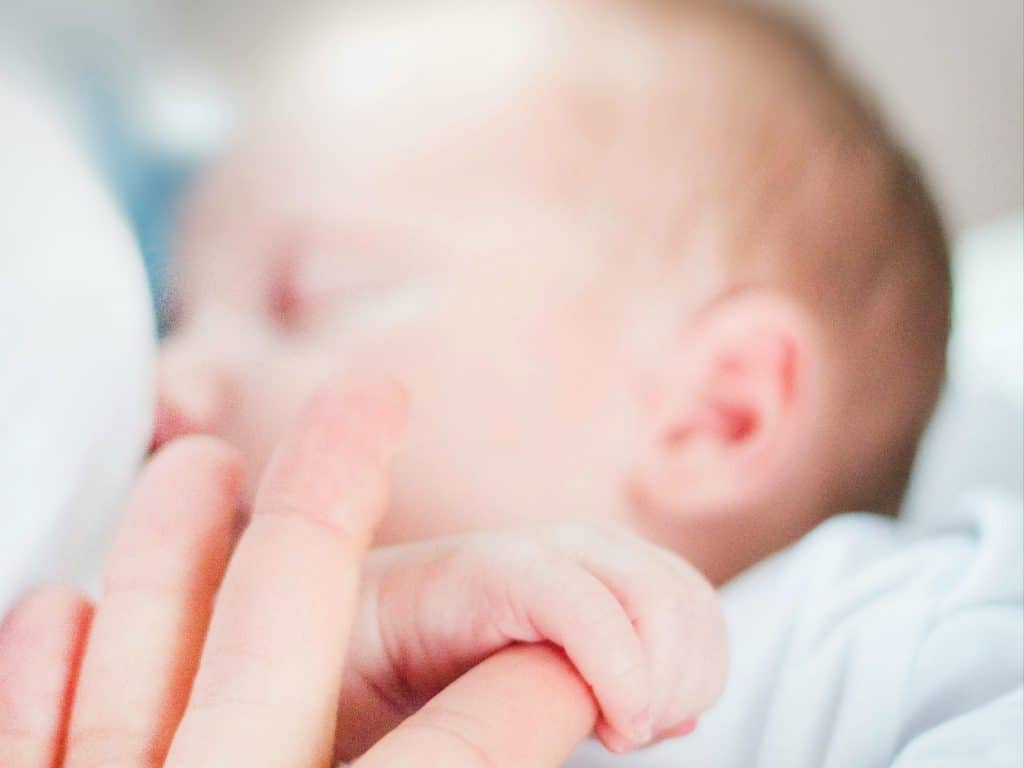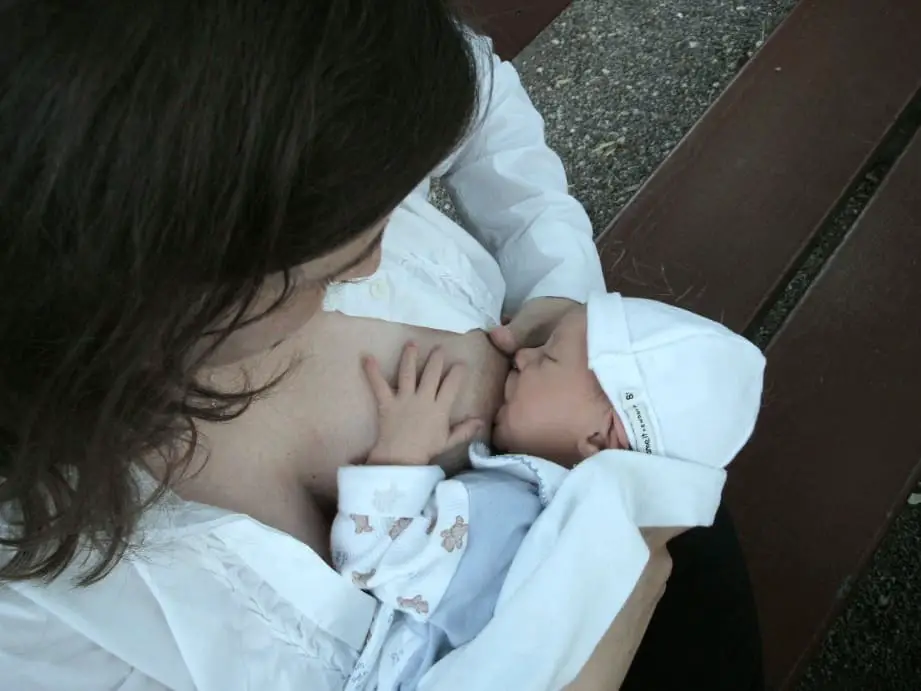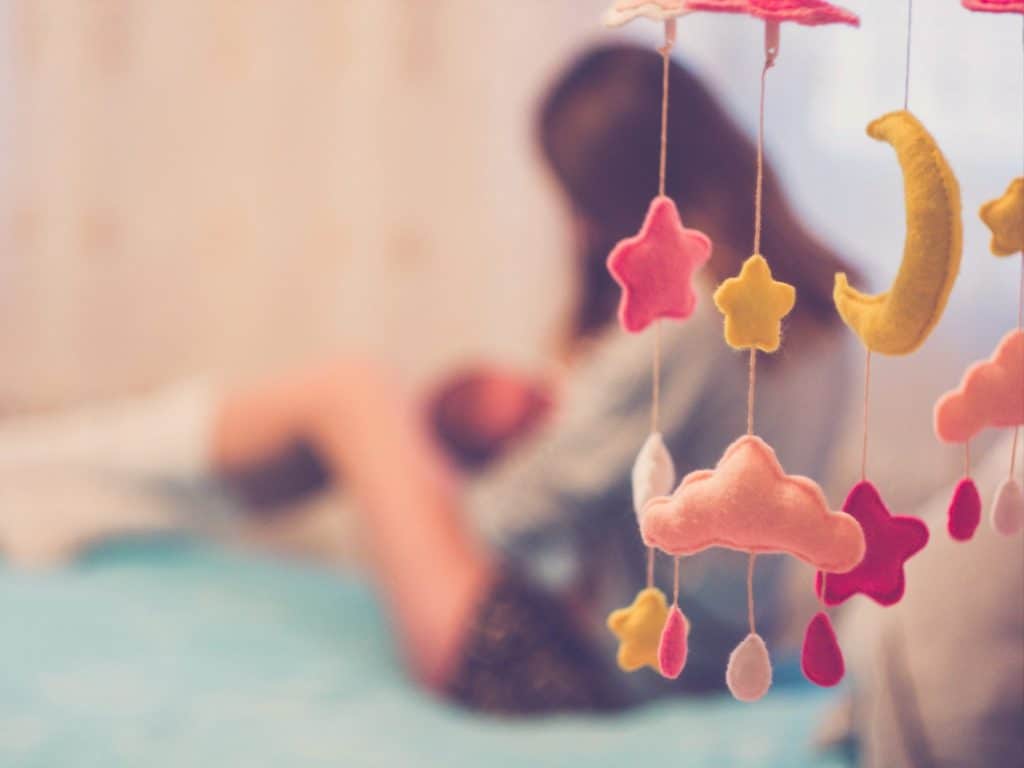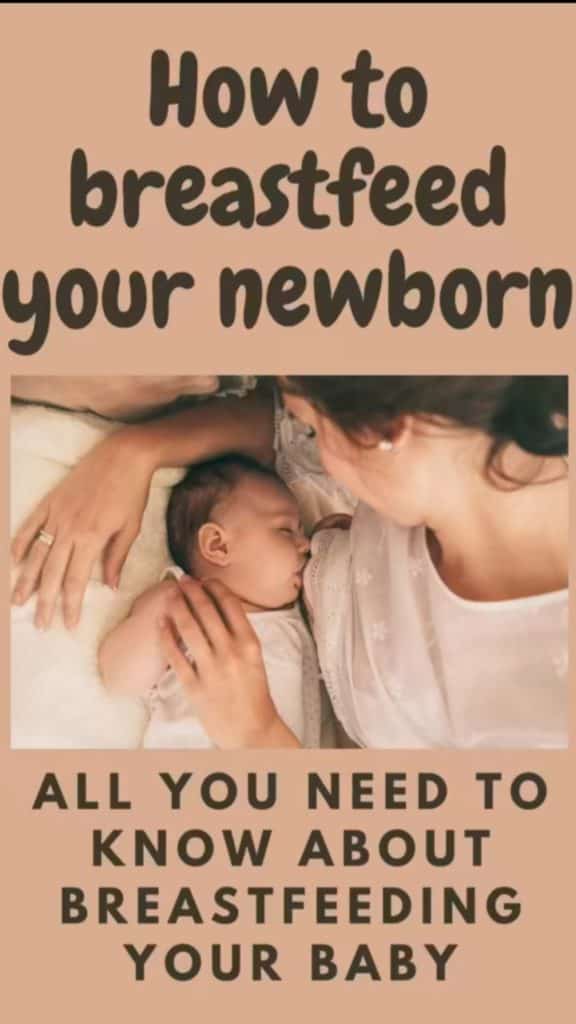
Breastfeeding is clearly the healthiest and most natural form of nutrition for your newborn baby. It contains all the necessary ingredients in an optimal composition for the development of your baby. Breast milk is more than just “food”. The close physical contact during breastfeeding your newborn also provides a sense of love and safety to the baby and promotes the emotional bond between you and the child.
Both midwives and the World Health Organization (WHO) recommend exclusive breastfeeding of healthy babies for about six months. Even after the introduction of complementary foods, it is advised to continue for at least the entire second half of the year and then even for longer if mommy and baby both want to.
To know how to breastfeed a newborn baby can be a challenge for a new mom. Here you find answers to common questions, breastfeeding tips, information, and facts. This will help you and your baby to have a good start together on your own individual breastfeeding journey.
All you need to know about how to successfully breastfeed a newborn
Right after having given birth your world might feel turned upside down. You get to know your newborn and at the same time must recover physically. Your feelings and emotions may be completely up and down. This especially occurs between the second and fifth day after birth. Then for many women the milk comes in and the so-called “baby blues” hits. In addition, there is often the expectation and the pressure to be back on your feet quickly. Don’t let any of that stress you. The best thing you can do during those first days is to take your time. Enjoy being with your newborn baby and focus on breastfeeding.

Disclosure: MyMommyHeart is a participant in the Amazon Services LLC Associates Program, an affiliate advertising program designed to provide a means for sites to earn advertising fees by advertising and linking to amazon.com
When to start breastfeeding a newborn?
It is best to put on your baby in the first hour after birth. By the baby latching and sucking the nipple rhythmically, the cells in your breasts are stimulated. That together with your hormones will initiate milk production. After all, midwives call the first hour after birth the “golden hour”.
So, if you and your baby are doing well right after birth, don’t worry about weighing or dressing the little one yet. Give that first breastfeeding session a priority. If you plan to give birth in a hospital, make sure your midwives are aware of that choice beforehand.
Enjoy the relaxed cuddle after all your hard work and focus on skin-to-skin contact with your baby. This releases oxytocin, the so-called “happiness hormone”, which stimulates the flow of your first milk, the colostrum.
Did you know that breastfeeding also benefits yourself in the process of recovering from birth? Oxytocin makes your uterus contract. Especially in the first few hours after birth and then during the first few days you might feel similar pain to labor pain whilst breastfeeding. These “extra” contractions after birth help to expel the placenta naturally and reduce blood loss. Then in the days and weeks to come, they help to shrink back your uterus to its original size.
Can I breastfeed after a c-section?
If you gave birth through a cesarean section or if there were other complications, you may still be able to have that first skin-to-skin contact with your baby and breastfeed within the first few hours.
If for some reason it is not possible, if you can’t hold your baby yourself, the best alternative is for the newborn to have skin-to-skin contact with your partner. That keeps your baby warm. It also gives the little one a feeling of safety and love until you are ready.
If for some reason your newborn baby is not able to breastfeed, you should start pumping milk early. That will stimulate your breasts for the milk to come in. You can stroke your breasts by hand and use a breast pump to stimulate your milk production. The valuable colostrum you gain can then be given to your baby (f.eg. with a syringe). This is especially important if your baby is born prematurely. Your breast milk has so many wonderful health benefits and is such a precious thing to give your baby.
And don’t worry, although it is a good start for mother and baby to breastfeed right after birth, it is not a drama if it doesn’t work right away. Try to relax and not stress yourself over the situation. You are doing what you can, and you are a good mommy!
It is by no means totally impossible to breastfeed if your baby is born via c-section, prematurely or if there are other complications that might initially prevent your little one from drinking directly from the breasts from the very beginning.
How to correctly latch a newborn
It is very important for your baby to correctly grasp the nipple for a successful start to breastfeeding. The correct latch determines how well the newborn can breastfeed and accordingly, how the baby will grow and thrive. In addition, if the little one doesn’t latch properly, it can lead to sore or cracked nipples for you.
To get the correct latch, point your nipple towards your baby’s palate when you put it on. The baby’s mouth should not only cover the nipple, but also part of the areola. That way the little one not only sucks on your nipple but also on some breast tissue.
When the baby is sucking, it should feel very comfortable like a light pull, but it shouldn’t be painful. Your baby’s mouth should be wide open. Very important is, that the lower lip is turned outwards and the upper lip gently surrounds the nipple and some breast. And don’t worry, since your little one will not drink large amounts of milk at this early stage, you will not see your baby swallow much yet.

How often to breastfeed a newborn?
The frequency and duration of breastfeeding can vary greatly in the first week. The first 24 hours are especially different from baby to baby. Some newborns sleep long. Having gone through birth makes them tired. Opposedly, some newborns already demand often to suck from the breast from the very beginning. This is unpredictable and can be confusing for a new mommy.
I recommend you listening to your baby and simply feed on demand. In my opinion, there is no other way to know how often to breastfeed a newborn. Babies don’t have an inner timer which wakes them up in a certain interval of hours to be fed. They just let you know when they are hungry or need your closeness. That could be way more often than expected but is so important for baby’s health and your bonding.
If your baby is one of those who needs lots of sleep after birth, you can still try to wake your newborn from time to time to initiate a feed. This is especially important during the first couple days when your breasts need stimulation. Your baby needs to get the precious nutrition from the colostrum.
Read more about increasing your milk supply naturally in this blog post.
Be prepared, that different people will give you different advice on how often to breastfeed.
It is important for you, to remember that you and your baby are unique, and it is your own journey to embark on.
During the very first few days, you and your newborn are in a practice mode. Colostrum is more viscous than mature breast milk and is produced in smaller amounts. It is still full of healthy ingredients and very important for your baby. While drinking your colostrum, your baby can practice swallowing, sucking, and breathing before your milk comes in in larger amounts.
When your milk does come in between the second and fifth days, your baby will likely drink at least 8-12 times in 24 hours. These first breastfeeding meals can range from 10 to 15 minutes. Or sometimes they last even 45 minutes up to an hour because your baby is still developing the muscles and coordination to suck efficiently.
After all remember this: there is no general formula of how many minutes or how many times a newborn needs to be fed. It is best if you can go with the individual schedule of your baby.
If you want to know more about breastfeeding on demand, check out this evidence-based guide on parentingscience.com.
What are newborn feeding cues?
The good news is that frequent breastfeeding stimulates and builds up your milk production. So, the more your baby breastfeeds, the more milk you will have. Therefore, you should not worry about a breastfeeding plan for your baby, as this may limit your newborn. Just focus on feeding on demand. Your baby will show signs of hunger, such as:
- Sticking out the tongue
- Making cooing noises
- Licking the lips
- Trying to eat the own hand
- Moaning
- Crying
- Screaming
Crying and screaming are very late signs of hunger, so always offer your baby the breast when in doubt. It can be more difficult to breastfeed your crying little one, especially at this early stage when you are both still learning together. The older the baby gets, the faster and less often your child will drink. Breastfeeding will become easier overall for both of you.
Does breastfeeding hurt?
You may have been told that breastfeeding shouldn’t hurt, but in fact, many mommies find it very uncomfortable during the first few days. This is not surprising when you consider that the nipples are not used to being sucked by your baby, strongly and frequently. Personally, I can highly recommend a Lanolin nipple cream. You can apply it after every feed from day one after having given birth. Lanolin soothes the nipples and doesn’t have to be removed every time before a feed since it is not harmful to your baby. It literally saved me in those first weeks of breastfeeding.
When your milk comes in, your breasts might feel full and firm and are certainly larger than before. For some women, the breasts swell strongly and become hard and sensitive up to pain. Frequent breastfeeding helps to reduce the pressure and prevents clogging up of any ducts.
Personally, with my firstborn, I had a lot of milk from the very start as soon as my milk had come in. My number one tip for relief: “Massaging out” some milk whilst taking a hot shower. Then cool the breasts afterward with cold packs from the fridge.
So, just be aware, that the first couple of days could be a bit uncomfortable for you. Your body and your baby both still must get used to breastfeeding. Nevertheless, if you feel intense pain during or after feeding your newborn baby, you should contact your doctor, midwife, or breastfeeding consultant. Especially if the pain persists after the first few days. Prevention is better than cure.

How many wet and dirty diapers should my newborn baby produce?
What goes in at the top must come out at the bottom! Colostrum has a laxative effect to make it easier for your baby to have the first bowel movement, the elimination of meconium. Meconium is the baby’s first stool. It may look a bit strange to you since it is black and sticky like tar. Don’t worry, it won’t always look like this. A dirty diaper of an exclusively nursed baby usually has a harmless, even slightly sweet smell.
Here you can find out how many dirty diapers you can expect from a breastfed newborn and when and what their contents should look like:
- 1st day: one or more greenish-black, sticky and tarry stool(s)
- 2nd day: two or more dark-greenish-brown, slightly less sticky stools
- 3rd day: two or more greenish-brown to brownish-yellow, no longer sticky stools
- 4th day: two or more yellow, granular, mushy, loose and watery stools
The stools should be yellow by the evening of day four for the latest. And from then on, the consistency should be like mustard with mixed mustard seeds.
Your baby’s urine should be light yellow. On average, a newborn lets water at least once a day. Then roughly by day three, your baby will start producing around three wet diapers per day. And from day five around it will be around five or more wet diapers a day.
How do I know if my newborn is getting enough milk?
Since you might only start with small amounts of colostrum and then breast milk, you may be worried that your newborn will not have enough to feed. However, if you keep breastfeeding on demand, you should automatically produce the amount of milk that your baby needs. If you want to keep track of things, you can compare your baby’s number of dirty and wet diapers with the number given above. If the number does not roughly match this scheme, ask your midwife or doctor.
In the first few days after birth, it is normal for newborns to lose up to 10% of their birth weight. So, no reason to be concerned about the weight of your baby during the first week. As long as you keep feeding on demand and your little one’s diapers prove good hydration, you are all good. Only roughly 10 days after birth, your baby needs to have reached back the birth weight again.
“I am not telling you it is going to be easy. I am telling you it is going to be worth it.” – Art Williams

That was it, all you need to know about how to breastfeed a newborn
Breastfeeding your baby may come with its challenges, but personally, I can tell you it will be so worth it. Soon enough you and your baby will have found your own routine. You will enjoy the beauty of the gift of breastfeeding.
I hope I have been able to answer some questions for you and share helpful information for the start of your and your newborn’s own breastfeeding journey ahead.
Comment below if you have any further questions or tips. If you are an experienced breastfeeding mommy, I would love to hear from your own journey.
If you want to learn more about newborn care, check out this blog post.


Oh I wish I would have read this years ago. This is great info for new breastfeeding moms.
Great review of breastfeeding! I love positive breastfeeding articles. I was lucky to be able to breastfeed both of my daughters for each of their first years. At some point, you say it’s easy to stop…but it’s also just as easy to keep going.